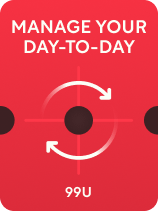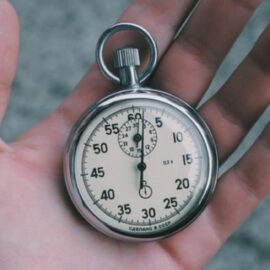

This article is an excerpt from the Shortform book guide to "Manage Your Day-to-Day" by 99U and Jocelyn K. Glei. Shortform has the world's best summaries and analyses of books you should be reading.
Like this article? Sign up for a free trial here.
When are you most creative? What’s your chronotype? Do you leverage this information for maximum creativity and productivity?
You have a particular rhythm of energy and alertness. When you’re aware of your ebbs and flows, you can schedule your day accordingly. This can help you maximize your creative work.
Read on to get practical tips from creativity coach Mark McGuinness and bestselling authors Daniel H. Pink and Cal Newport.
Identify Your Focus Period
When are you most creative? Poet and creativity coach Mark McGuinness suggests that your routine should center around your periods of highest focus. He explains that everyone has a circadian rhythm that determines your level of mental alertness throughout the day. He recommends aligning your routine with your energy level to ensure that you work on your creative projects at the times you’re most focused.
| How to Identify Your Focus Period In When, Daniel H. Pink goes into detail about how your circadian rhythm, your natural sleep/wake cycle, impacts your focus. He explains that over the course of a day, most people experience a predictable pattern of energy: a crest (what Pink calls a peak), a slump (a trough), and a recovery (a rebound). The crest is when most people are at their most focused. Pink clarifies that while this pattern of crest, slump, and recovery is common to all people, the time of day that the pattern begins varies depending on our chronotype. Your chronotype is the individual expression of your circadian rhythm; it impacts when you wake and sleep and when you’re most alert. Pink outlines three common chronotypes: • Morning Types (referred to as “larks”) tend to rise early. They hit their crest mid-morning, their slump mid-afternoon, and their recovery in the early evening. • Night Types (referred to as “owls”) are the opposite. They’re most alert at night, lag in the morning, then gain momentum in the afternoon. • Intermediate Types (referred to as “third birds”) are the most common, and their ideal schedule falls somewhere in between the first two categories. According to Pink, knowing your chronotype will give you greater insight into your daily rhythm (crest, slump, and recovery) and allow you to be more strategic about how you use your time. After learning more about your chronotype, Pink recommends adjusting your schedule accordingly. You can learn more about your chronotype here. |
The author of Deep Work, Cal Newport, advises that after identifying your focus periods, you block them out in your calendar. Scheduling this time, as you would an important meeting, not only reminds you that time is saved for your creative work but also allows you to focus on those projects without interruption. He emphasizes that, once you schedule your focus block, you shouldn’t allow anything to intrude, whether it’s phone calls, emails, or spontaneous interruptions.
| How to Schedule Focus Blocks Your most important creative projects likely qualify as what Newport terms deep work—cognitively demanding tasks that require undistracted focus. In Deep Work, he elaborates on four ways to schedule your focus blocks for deep work, depending on your preference, lifestyle, and other obligations: 1. Seclusion: This schedule involves dedicating long, uninterrupted periods of time to deep work, often lasting several days or even weeks. It requires isolating yourself from distractions and immersing in deep work for extended periods, typically in retreat-like settings. 2. Periodic: The periodic schedule involves splitting your time between deep work and shallow work. It entails designating specific days or periods solely for deep work while allowing other days for regular, shallow tasks, meetings, and administrative work. This approach allows for concentrated deep work sessions without neglecting other responsibilities. 3. Daily: The daily schedule involves creating a daily routine where specific time blocks are consistently dedicated to deep work. It could be a few hours each morning or a consistent block of time every afternoon. The key is establishing a predictable schedule that becomes a habit, allowing you to regularly engage in deep work. 4. Ad Hoc: The ad hoc schedule is more flexible and adaptable. It involves fitting deep work into available time slots whenever possible, based on the demands of the day or week. This approach requires flexibility and the ability to seize opportunities for deep work as they arise, even if the schedule isn’t consistent. |

———End of Preview———
Like what you just read? Read the rest of the world's best book summary and analysis of 99U and Jocelyn K. Glei's "Manage Your Day-to-Day" at Shortform.
Here's what you'll find in our full Manage Your Day-to-Day summary:
- That creativity is the result of disciplined work habits, not innate genius
- Tips from experts on how to boost your creativity, focus, and productivity
- Why you should never strive for creative perfection






